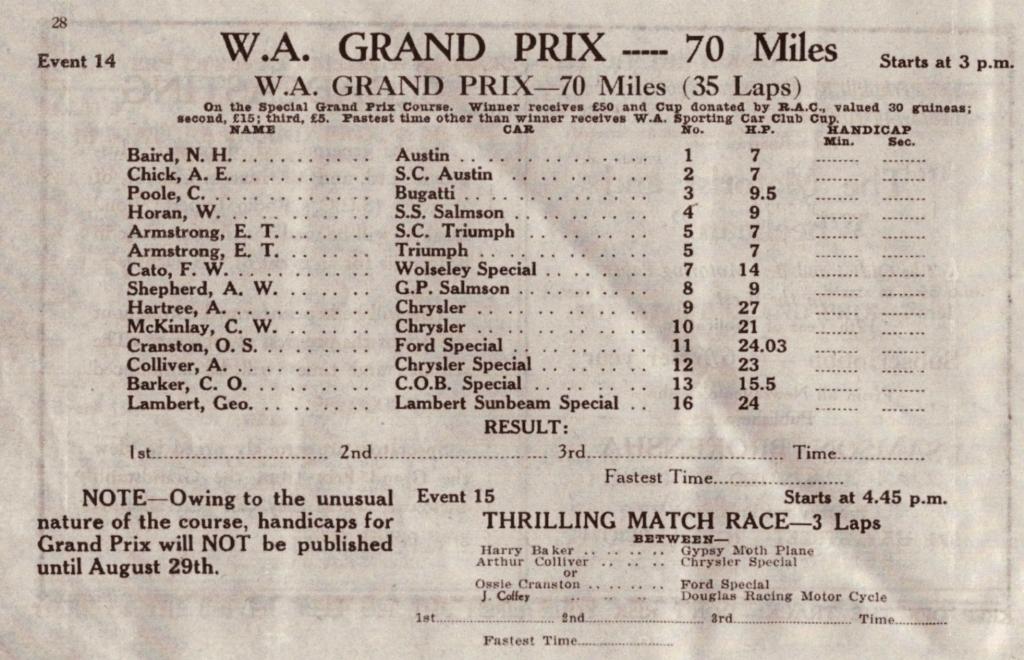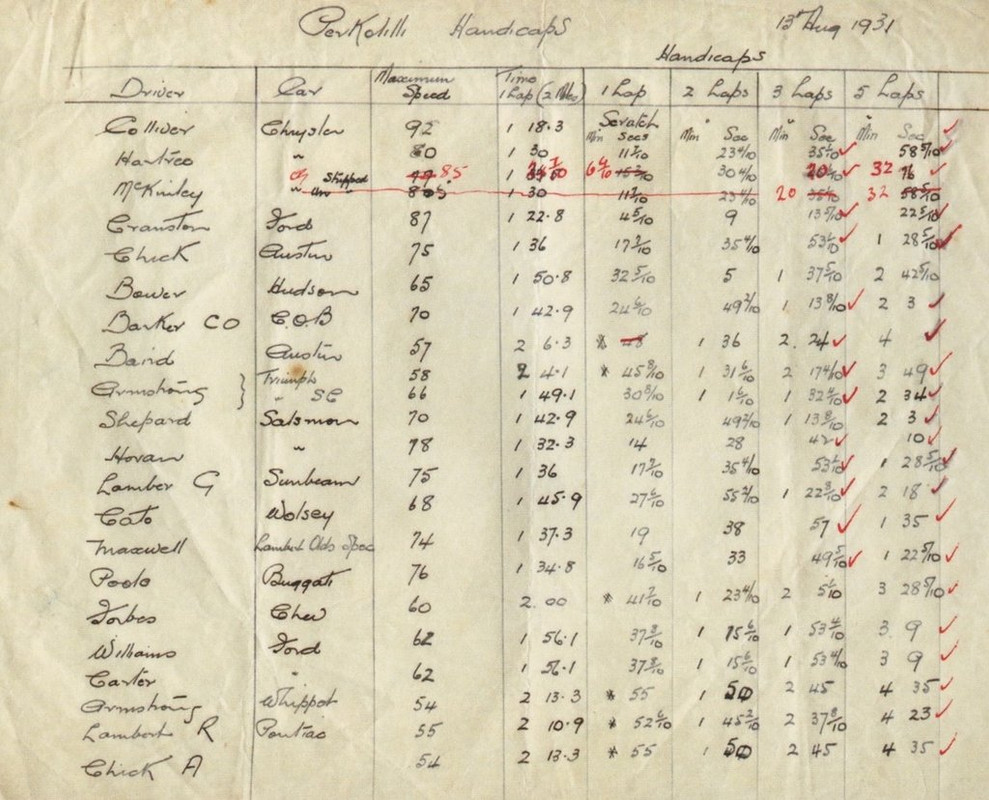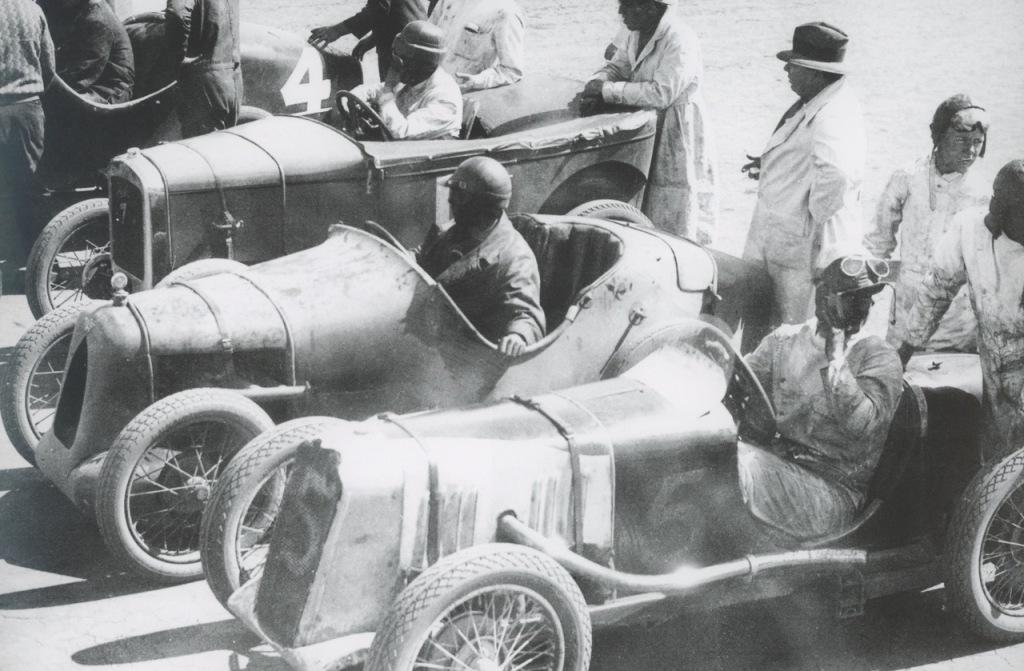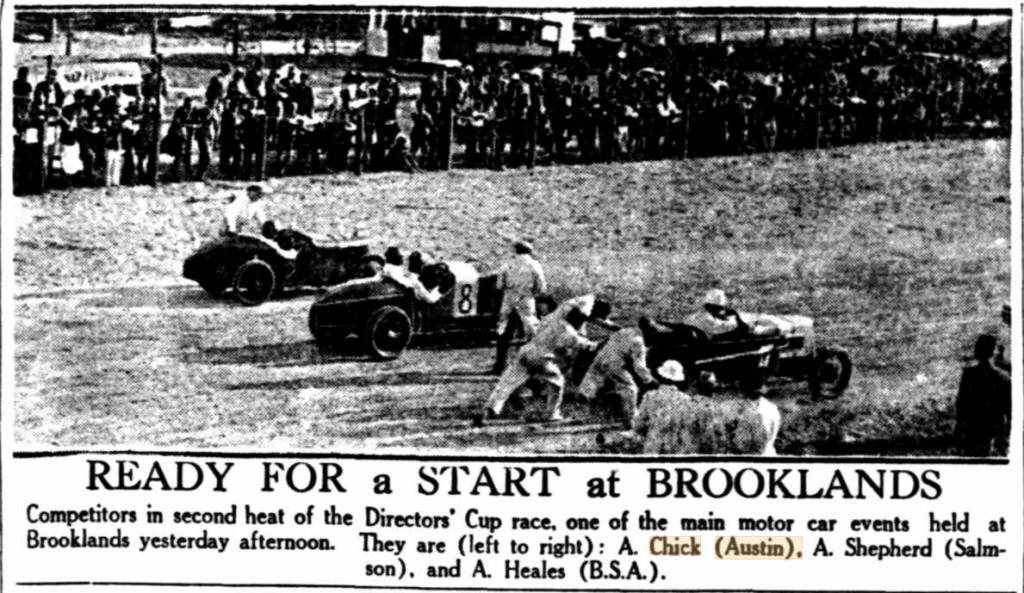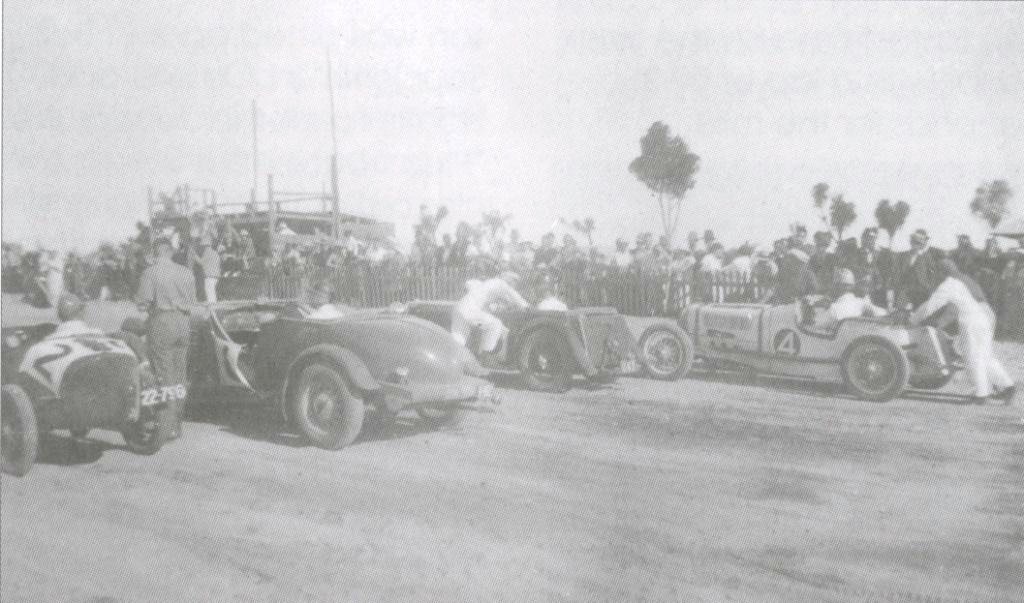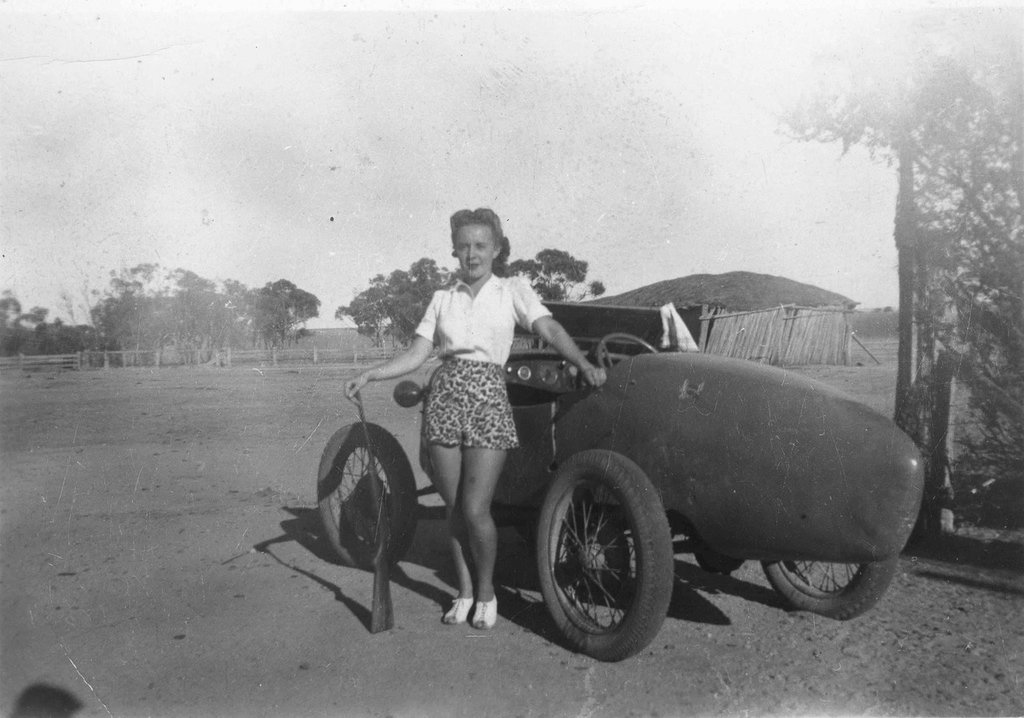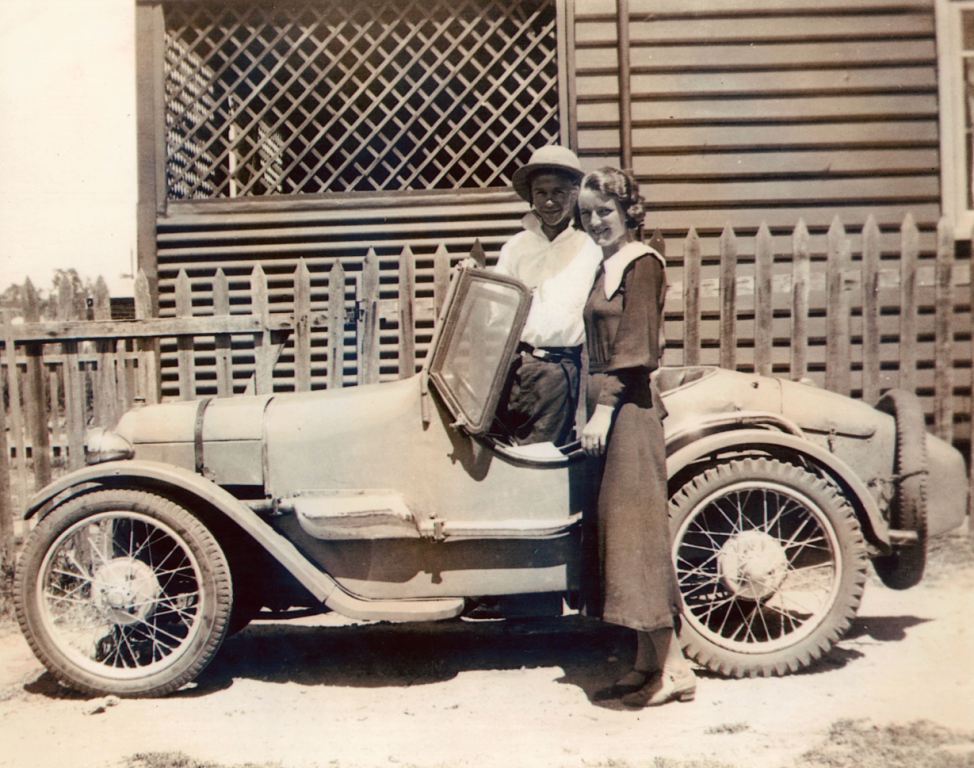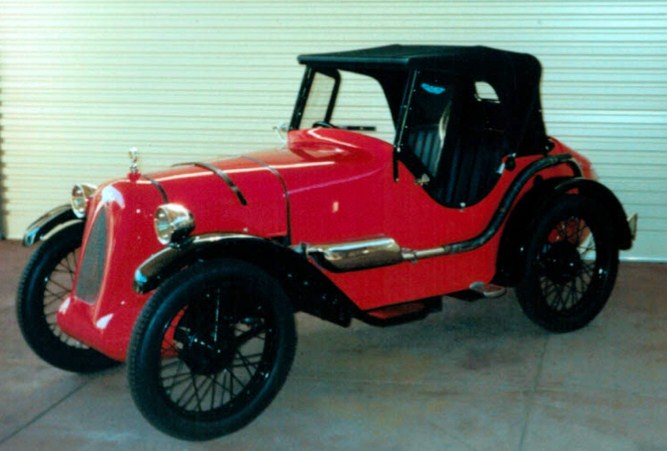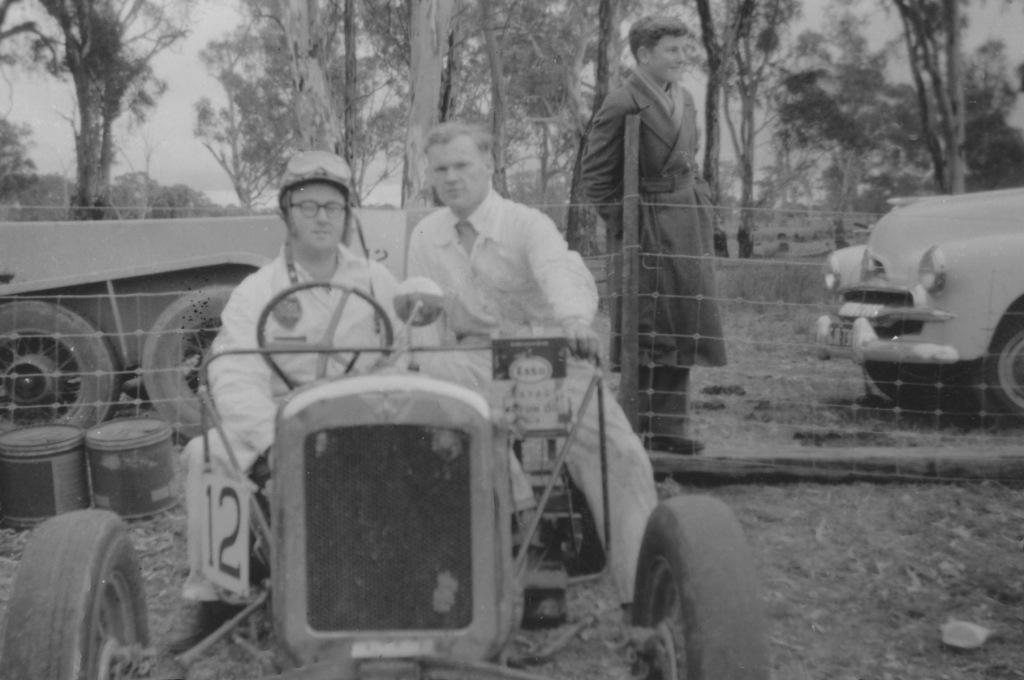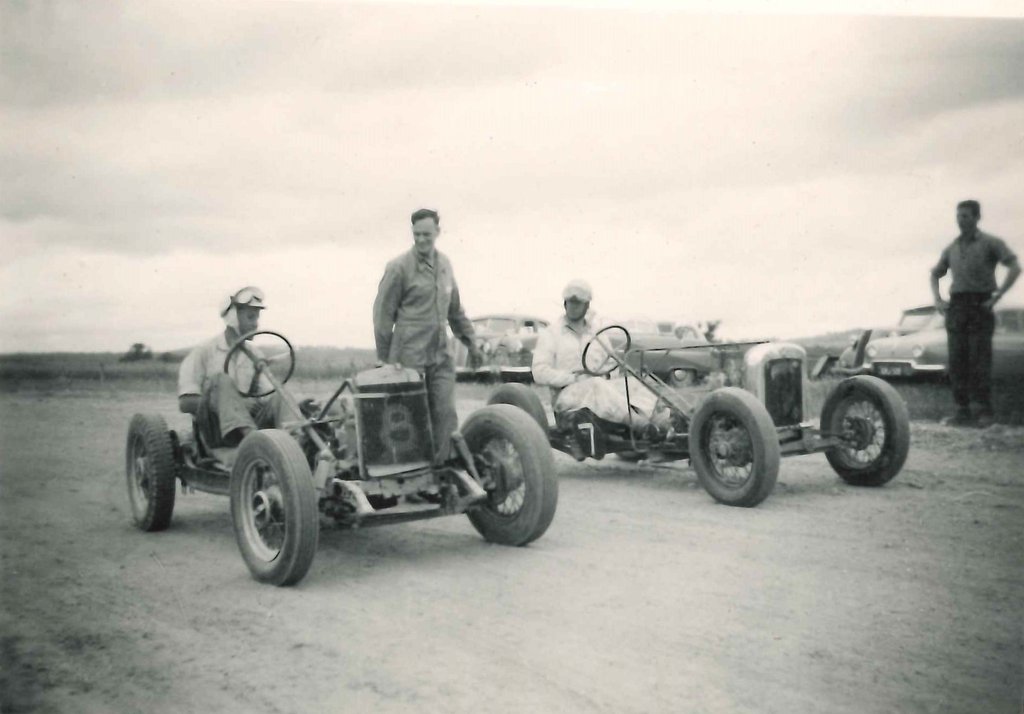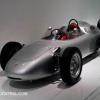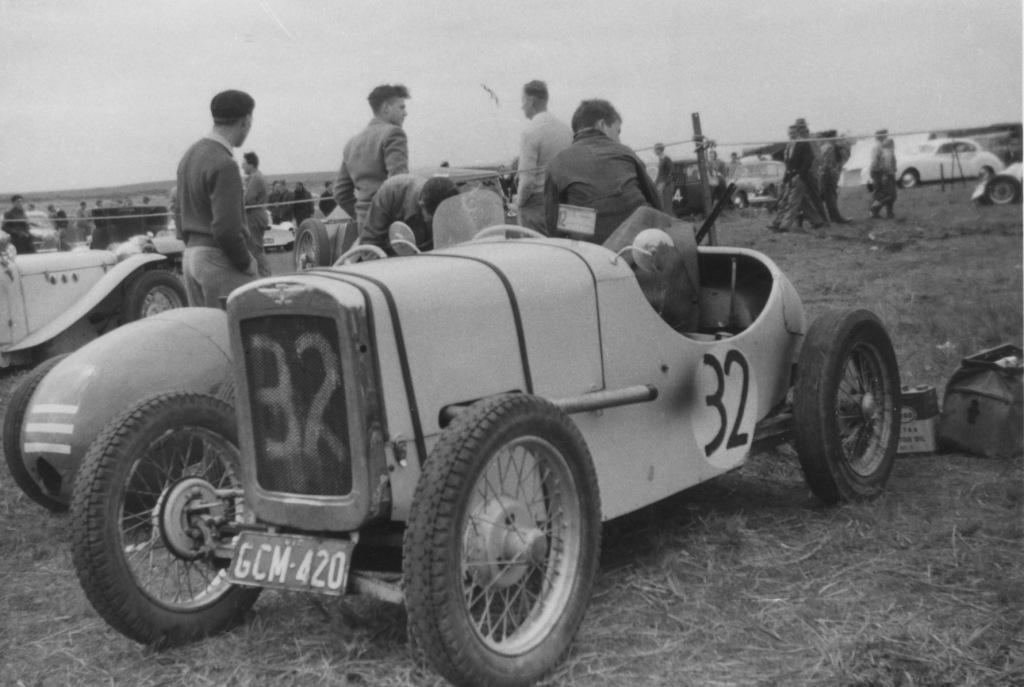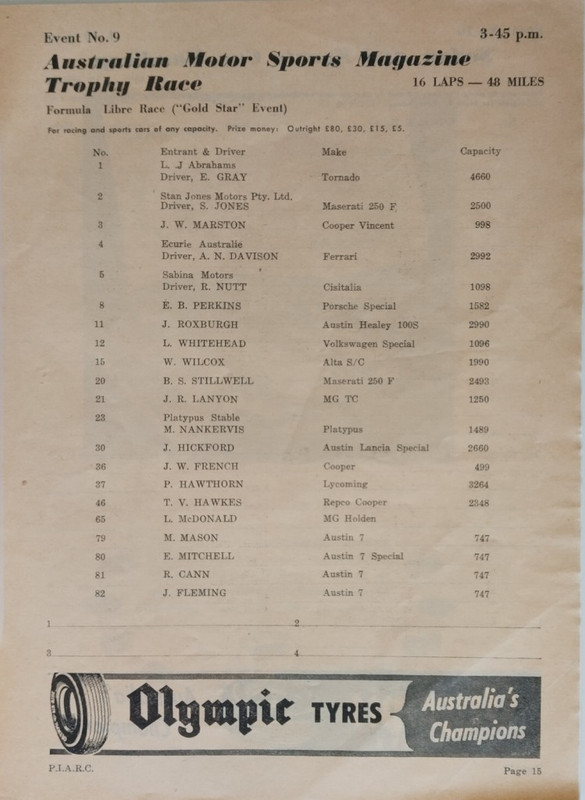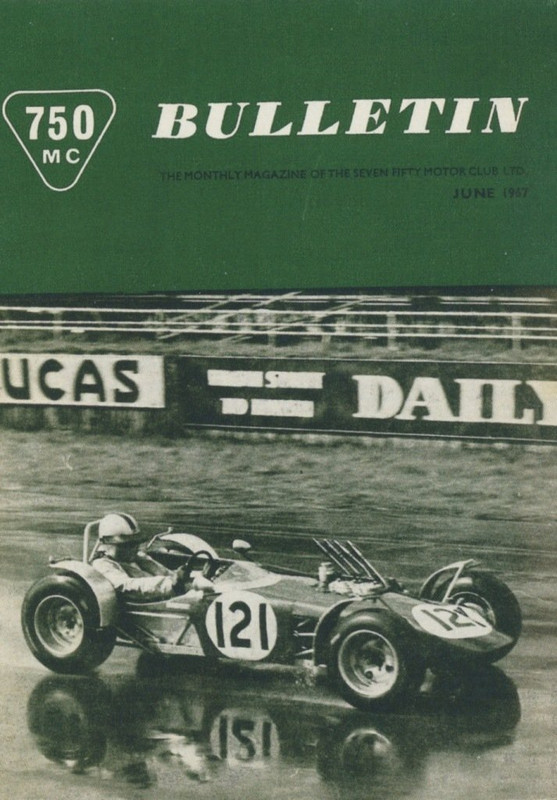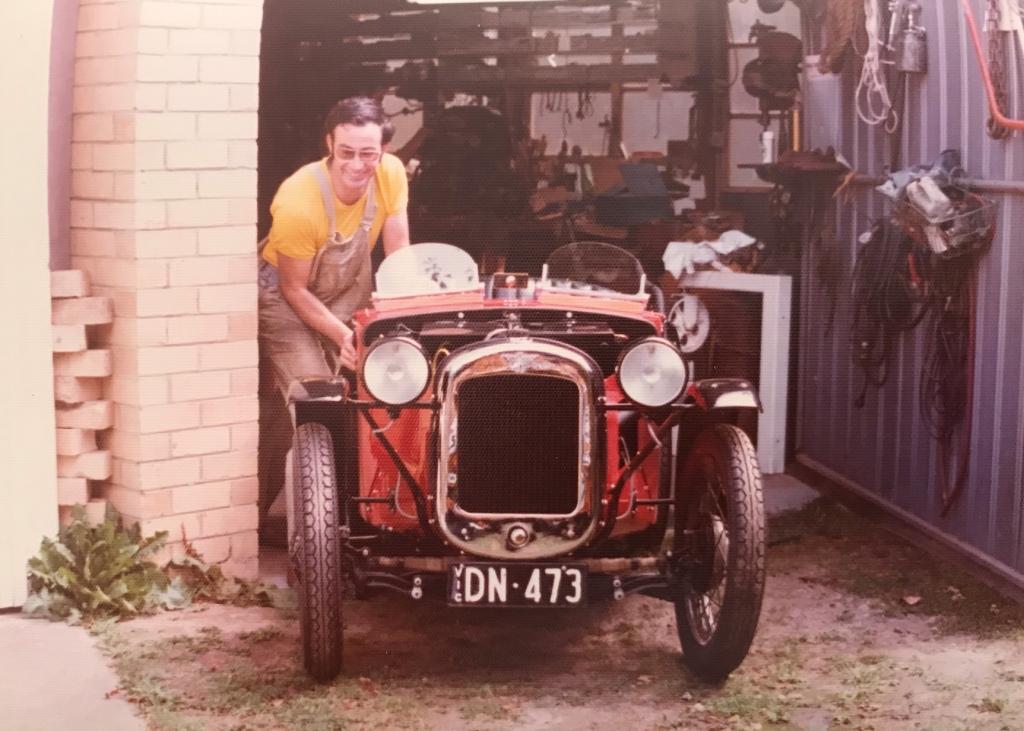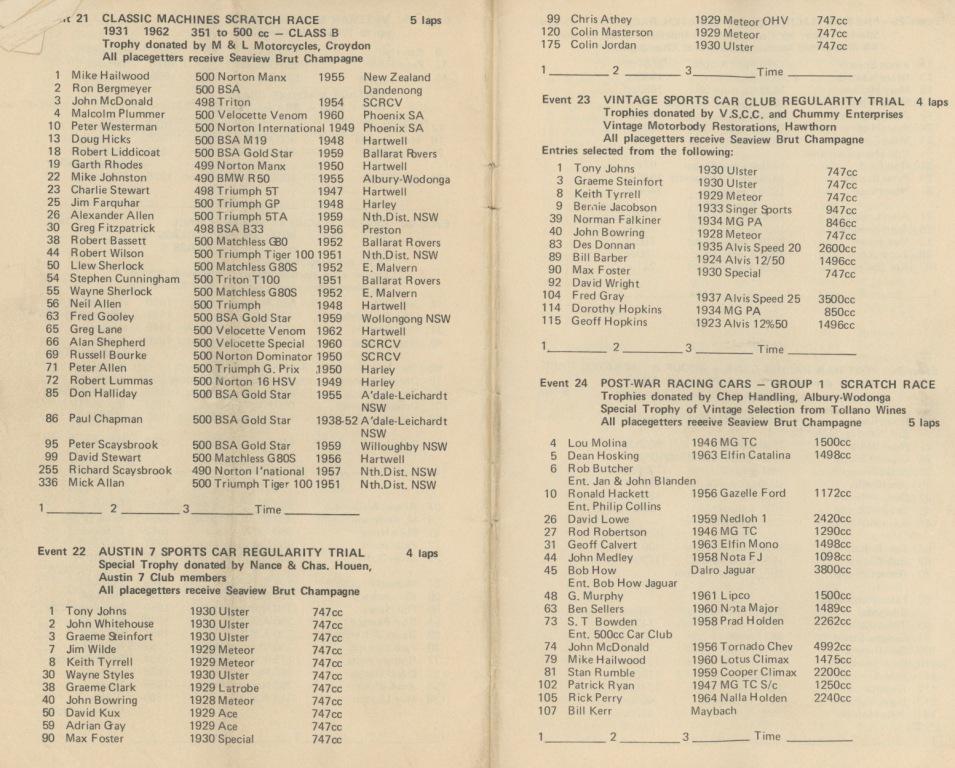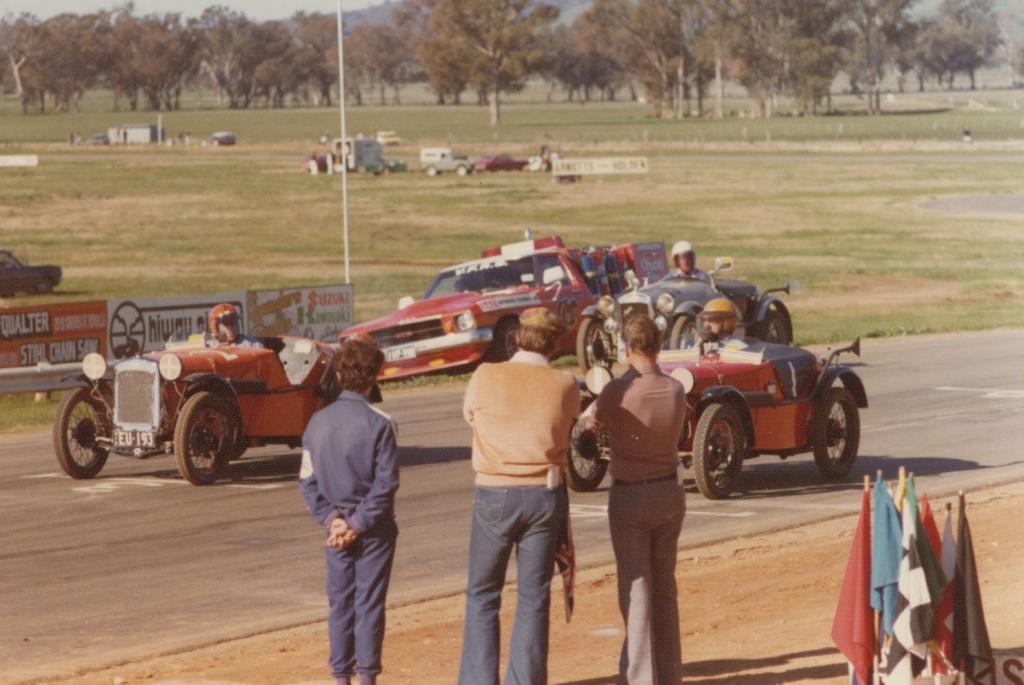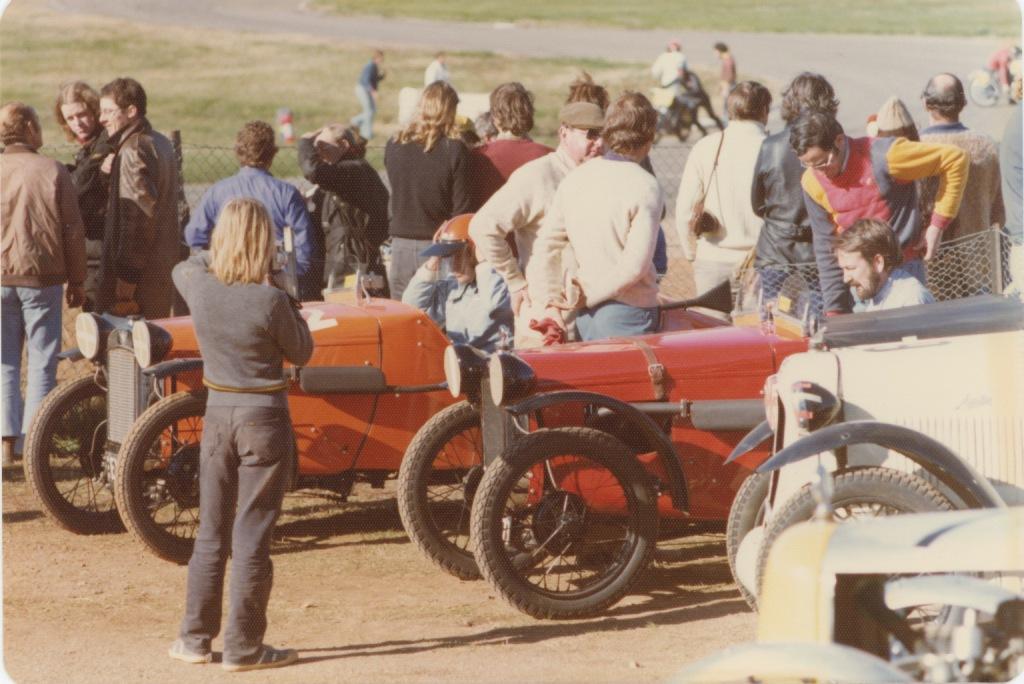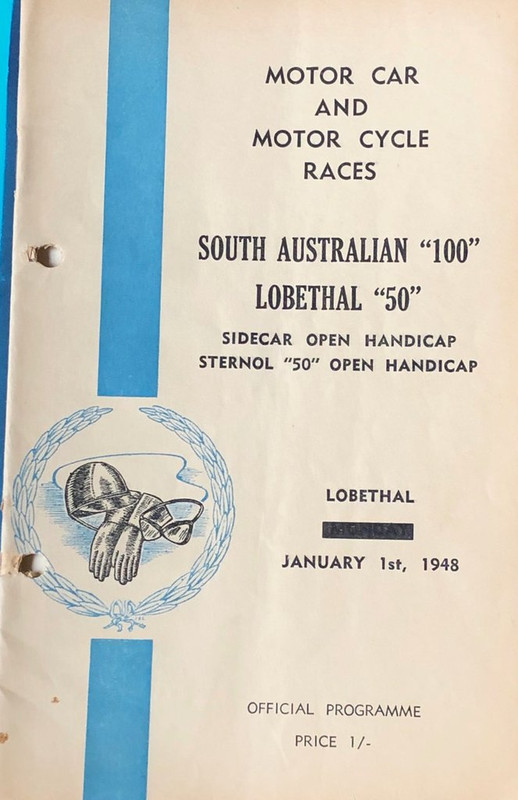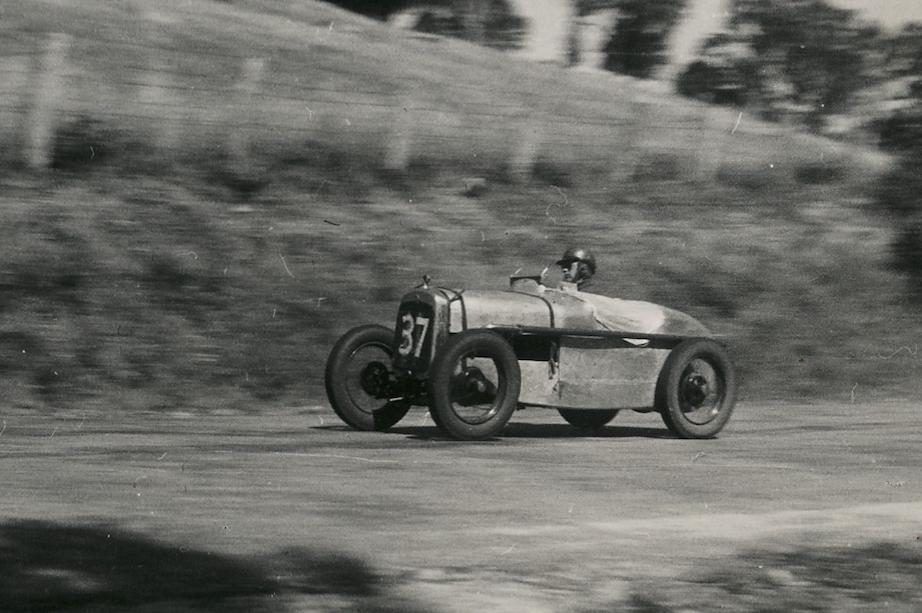Aubrey Melrose
I was very fortunate to meet Aubrey Melrose at Sandown Park in March 1962. It was the first International race meeting held at the new circuit located in outer Melbourne. We were both spectators, me with my ‘Chummy' Austin 7 and he was driving a Porsche 356 with the number plate 212. At the time, I had no idea of the significance of the number plate nor of his Austin 7 achievements.
Sandown Park, 'Brighton Boys’ spectating. 12 March 1962.
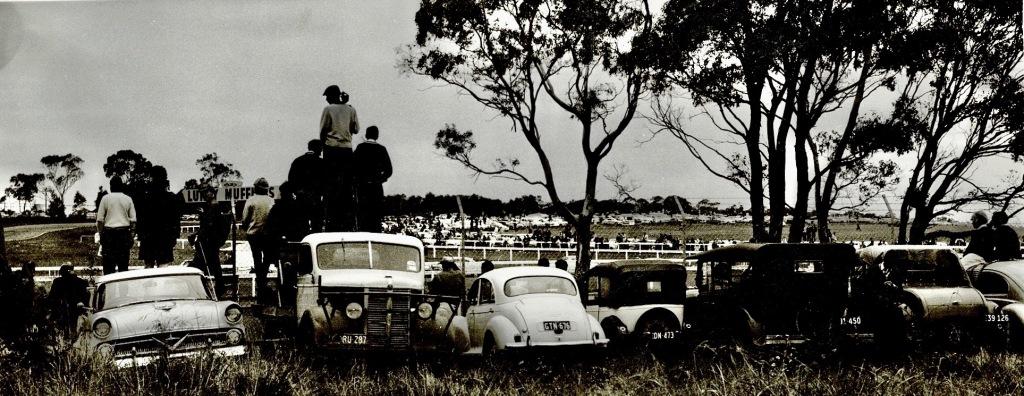
Darren Overend Collection.
As a teenager Melrose was a champion athlete before getting involved with racing motorcycles. After making a name for himself in Western Australia, he headed to England in 1926 and became a works rider for the Sunbeam Team. He was the first Australian to finish at the Isle of Man TT, and in the Ulster Grand Prix. Returning to West Australia in the late 1920s, he continued to race motor cycles and following a bad accident he nearly lost his foot. At the start of the depression he was unemployed and on crutches, but he overcame both of these obstacles to establish his successful garage business, repairing Austins.
Aubrey Melrose, outside his Austin workshop. Located at 169 St George’s Terrace Perth.
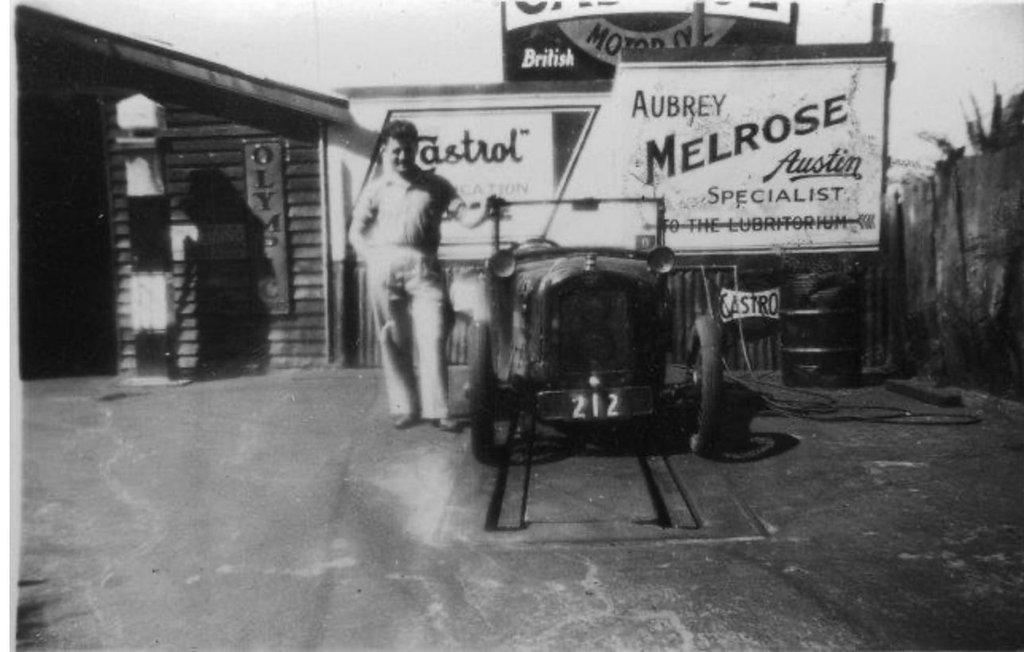
Terry McGrath Collection.
Aubrey Melrose, and Neil Baird (mentioned in post #352, 3/4/2024) were instrumental in forming the WA Car Club in June 1933, a club to cater for sporting motorists who wanted to compete in trials, but not out and out racing.
In 1936 when details of the South Australian Centenary Rally were announced, Melrose went to the Perth Austin agents, Winterbottom Motor Company. Rather than enter the rally driving a new car, he purchased a second hand 1929 Chummy for 68 guineas that looked like it had seen better days. It had already done 100,000 miles and been rebored twice. He spent three months rebuilding it to cope with the outback conditions including fitting the latest 16” wheels with balloon tyres.
Some 147 competitors drove from the starting points in Sydney, Melbourne and Perth to the finish in Adelaide.
The West Australian published this story following interviewing Aubrey Melrose on his return to Perth.
ACROSS AUSTRALIA. OVERLAND BY CAR.
The difficulties which he had to surmount when crossing from Perth to Adelaide in a baby model car in December were related by Mr Aubrey Melrose, who reached Freemantle from the Eastern States yesterday. With his wife Gwyn as passenger, he drove the vehicle through all sorts of conditions to gain the first prize in the South Australian Centenary car rally. The prize was the Dunlop Gold Cup valued at 100 guineas. He also won a coffee service, worth 25 guineas for winning the West Australian route prize.
It took him 5½ days to travel the 1726 miles to get to Adelaide, and on reaching there he had to take part in a series of difficult tests before the award was finally made.
“We left Perth on December 17”, said Mr Melrose, “and our first day’s run was from Perth to Coolgardie. The heat was terrible, and during the day the car ran out of water and the engine seized. This was due to the fact that the motor meter was not working properly. I poured cold water into the radiator and the engine went again perfectly.”
“The second day’s run was from Coolgardie to Balladonia. We had to average 25 miles an hour over this section, and we were driving for over 16 hours. We did quite well as far as Norseman, picking up quite a considerable bit of time by averaging 36 miles per hour. From there, however our troubles started, and we eventually arrived at Balladonia with only a few minutes to spare without loosing any points. From Norseman the car, which itself weighed only about 8cwt., carried over half a ton of material, including 22 gallons of petrol, 9½ gallons of water, ½cwt. of tools, springs, lubricating oil, provisions, camping equipment, chains, and over £30 worth of spare parts.”
“After travelling 60 miles from Balladonia we saw a thunderstorm ahead, they had had no rain for three years, and the dust was as fine as flour. When the storm struck it was impossible to see a yard ahead and I had to pull up for 10 minutes until the storm passed over. In that short time about an inch and a half of rain fell. For the next 40 miles we travelled through water which was never less than a foot deep, and often two feet deep. We were never out of bottom gear for the whole of the distance. It took us three hours to cover that 40 miles, and instead of being about three hours up on our schedule at the end of the day we only managed to avoid losing points by a few minutes.”
“The next day we were away early in the morning on our way to Eucla. For the first 50 miles we were still in the track of the thunderstorm and had to travel through mud. After that the mud stopped in a clearly defined line, and we were once more into the fine, dry dust. This dust hampered all of us, but affected the larger cars more than it did mine, as it was so deep in parts that it stopped them dead. From Eucla the run to Ceduna started with 120 miles of perfect going. However the last 80 miles was through heavy sand, and we did it all either in second or bottom gear. During that day we had to open and close 35 gates. The final section was from Port Augusta to Adelaide, and we covered the 204 miles in 5 hours 20 minutes.”
“ It was a wonderful experience,” concluded Aubrey Melrose, “but it was very tiring. It has been said that the West Australian competitors must have the easiest route, as they won the first three prizes, but we all had to work like maniacs every night to keep our cars in good order. During the trip over my wife and I averaged 2½ hours sleep a night, the rest of the time being spent in looking after the car”.
Following the tests and subsequent celebrations at Adelaide after the announcement of the winners, rather than drive back to Perth they continued through South Australia, Victoria, New South Wales and Queensland up to Brisbane. The Austin was then loaded on the ’Manoora’ and they made the return journey to Freemantle by ship.
A followup story published in the Perth Daily News, 11 February 1937.
An immaculately dressed chauffeur and two bright young things in shorts stepped from a sumptuous £2000 car as an army of press photographers asked them to pose.
Casting a contemptuous glance at a mud-splattered “Baby” Austin that had drawn up alongside the spotless sedan, one of the bright young things petulantly enquired, “Can’t we move from here? We don’t want to be taken beside that dirty little tin can.”
When news of outright win in the Centenary Trial reached Longbridge England, Lord Austin arranged for a gold watch with the simple inscription 'Congratulations, Austin'. The managing director of the Perth Austin agency, Mr W J Winterbottom presented the watch on behalf of Lord Austin to Aubrey Melrose at a gala function held at the Adelphi Hotel.
A staged photo taken at the completion of the Centenary Trial, showing Aub checking one of the Olympic balloon 16” tyres with his wife Gwyn looking on. The P3 number indicated that the Austin had started the trial in Perth.
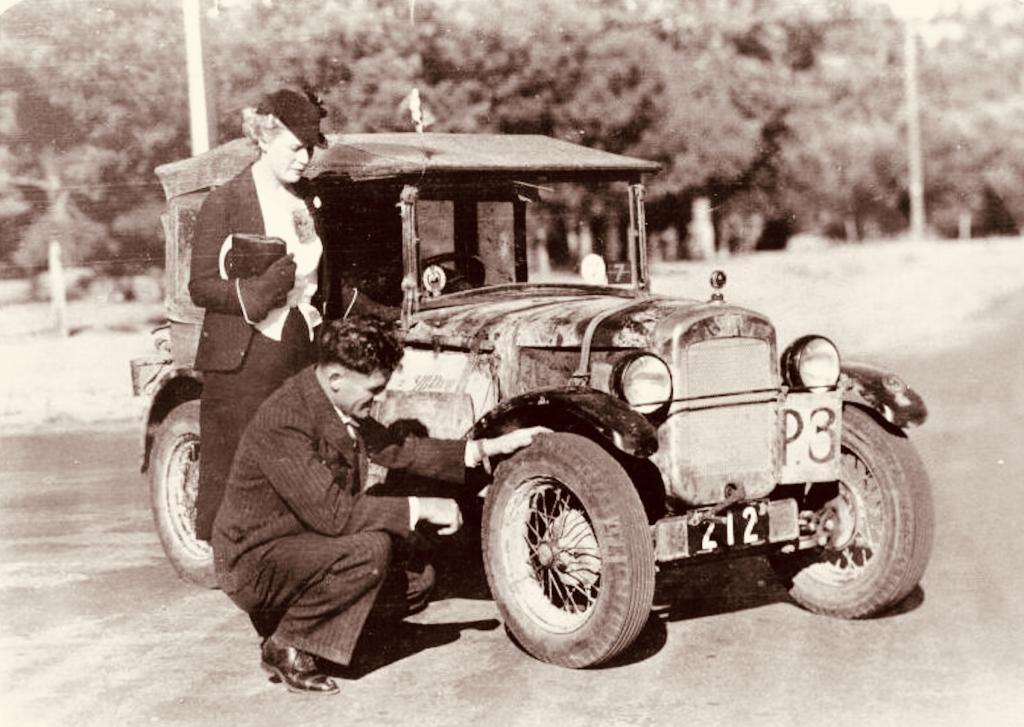
Terry Walker Collection
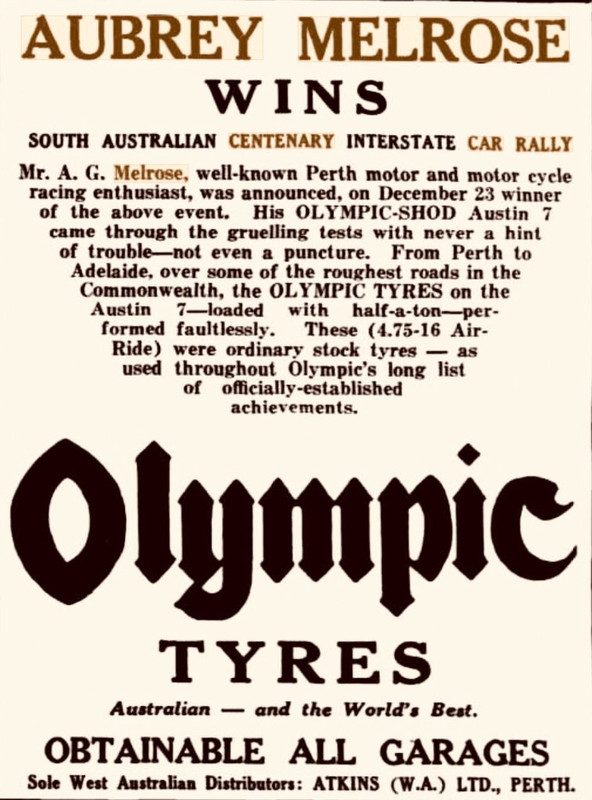
Trove, National Library of Australia.

Trove, National Library of Australia.
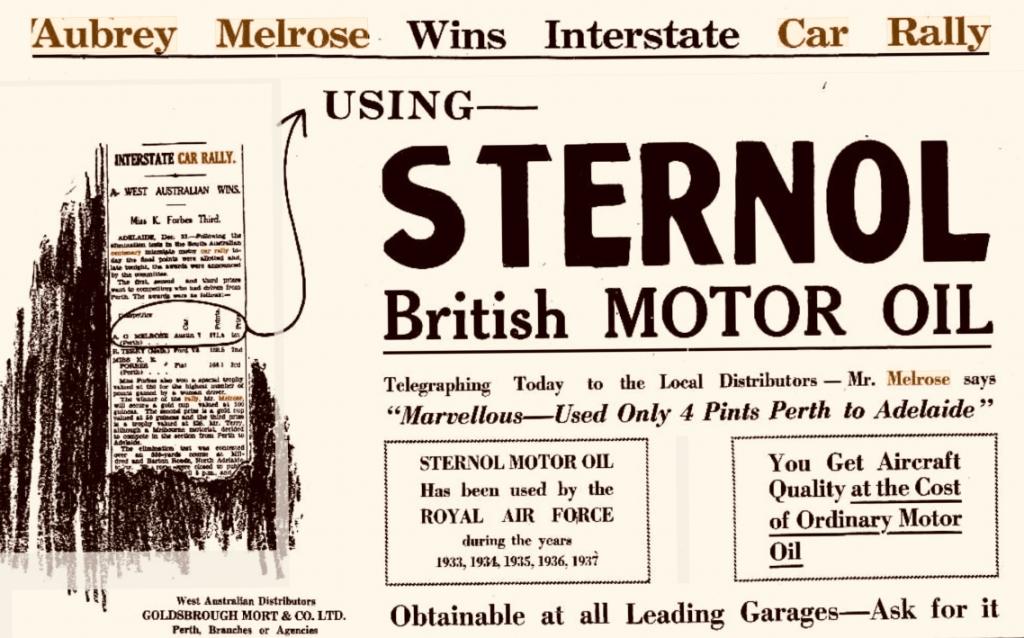
Trove, National Library of Australia.
The first ‘Round-the-houses’ motor race at Albany was held in 1936. A coastal town located south of Perth. Following on from the successful first meeting in 1936, the West Australian Sporting Car Club added a race for motorcycles to the program for Easter 1937. The Mount Barker Record reported "Aubrey Melrose, veteran motorcycle champion, who acted as referee, covered nearly as many laps on his aged Harley as did the competitors themselves. He described the course as the best he had ever seen. He pointed out that its very difficulties made for safety because a rider must have his attention concentrated on the track the whole time. “They’ve got to ride their bikes”, he said. “It is not just a question of opening out and keeping her open. The race will probably be won and lost on the corners, not on the straights.”
Melrose entered an Austin 7 in the 1938 Albany race, and finished in 9th place out of a field of 19. Another Austin 7 entered by R J Coleman was a non starter in the race following an accident in practice when his Austin rolled twice at Town Hall corner. The Albany Advertiser noted "Aubrey Melrose, in his Austin 7, bounced and bounded round the course and, as he said afterwards, thoroughly enjoyed himself. Aubrey says he ‘rides' his Austin, just as he does a motor bike, and it certainly looked like it. He got a rousing cheer at ‘Salvation' corner when he actually succeeded in passing Spencer Staines, who had run off into the rough in his Oldsmobile”.
Aubrey Melrose competing in the Grand Prix, held at Albany 1938 in his unsupercharged Austin 7.
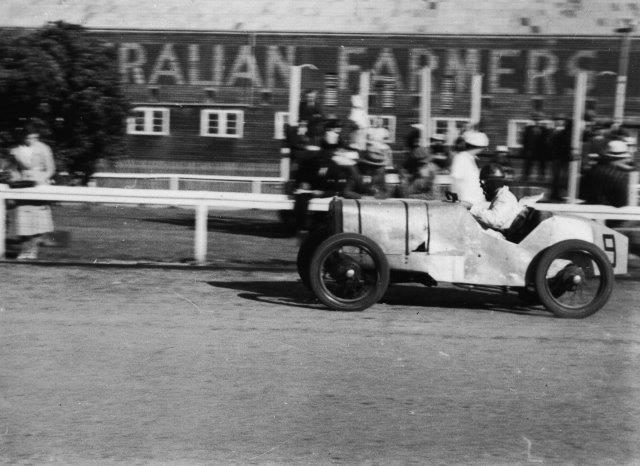
Terry McGrath Collection
The Western Mail article previewing the drivers for the 1939 Albany Grand Prix to be run on 18 April gave details of Melrose’s new Austin.
"Aubrey Melrose, now almost a tradition in competitive events with motor cars and motor cycles, appears to be making a real bid with an Austin 7. Last year he entered an Austin 7 in practically stock condition. The machine was not possessed of sufficient speed to enable the driver to show his skill at the wheel, but this year things should be very different. The machine which Melrose is entering will be a composition of many varied relations with a range of all ages, with possibly the original chassis, a very recent motor from one vehicle, genuine Girling brakes from another, front axle from another and wheels from yet another. These parts, with the addition of an Arnott supercharger, should make a very speedy entry.”
Not taken at Albany, but this photo shows the Arnott supercharger and the oil supply tank attached to the bulkhead.
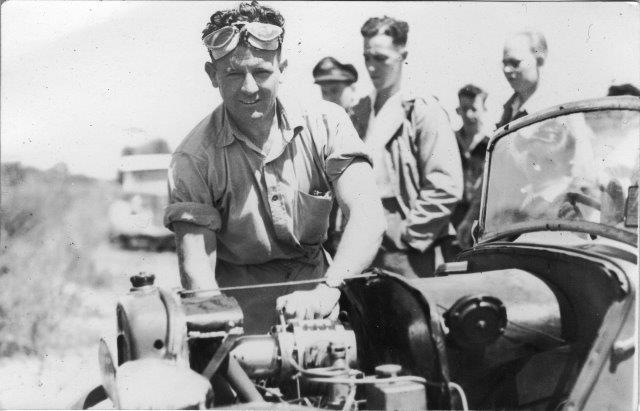
Graeme Cocks Collection.
Melrose missed the practice run on the morning of the Grand Prix when he discovered a badly damaged steering box, a fault he had not detected when repairing damaged steering gear in the dark the previous evening. He spent the rest of the morning effecting repairs. A handicap race, he started 9th on the grid and moved up to 6th place before he was forced out on the 15th lap with a run big end.
Returning to Albany in 1940 for the Easter TT race, he finished in 7th place.
Held as a fundraiser for the various charities devoted to the care of servicemen, The West Australian Sporting Car Club organised a meeting to be held on public roads at Applecross, a suburb of Perth. With World War II in progress, petrol rationing had already begun in Australia, and the idea of racing so close to the city was that spectators would have less miles to travel than going to an existing circuit located in a country town. The organisers included in the program a four lap race for standard cars fitted with gas producers. The Patriotic Grand Prix held on Remembrance Day, 11 November 1940 was a one off event and no street race has been held in Perth since.
The West Australian newspaper reported the following day ’Thousands of cars involved. It is impossible to give an accurate estimate of the number of persons who witnessed the Patriotic Grand Prix at Applecross yesterday, but an extraordinary traffic jam which occurred after the race gave some indication of the size of the crowd. Some persons sat in their cars for an hour, unable to nose their way into the stream of traffic, and for nearly two hours a line of cars stretched from Canning Bridge to Perth’.
The huge crowds on Kintail Road waiting for the start of the Patriotic Grand Prix. Aubrey Melrose standing in front of his Austin, was first away on handicap. (Note the scoop on the bonnet to direct air to the supercharger.)

Graeme Cocks Collection.
Aubrey Melrose rounding the corner just ahead of Ron Posselt in his Ford V8.
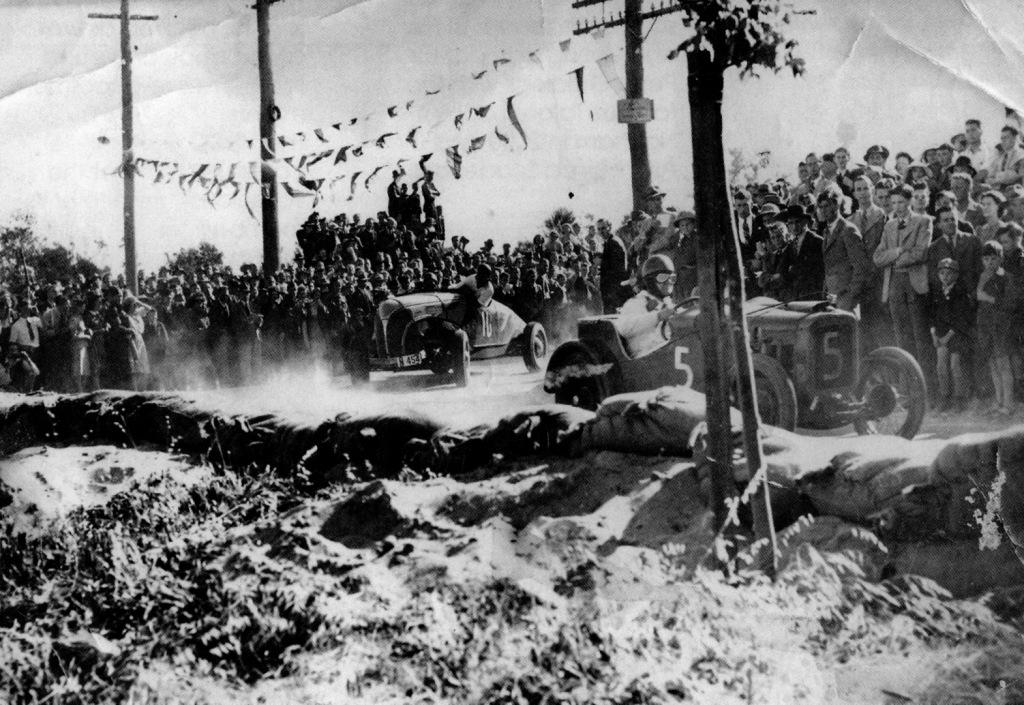
Graeme Cocks Collection.
The West Australian reported the highlight of practice which was provided by Melrose, who rolled his Austin 7 over on one corner. The car finished up on its wheels with the engine still running and Melrose leapt in to complete the lap very little slower than his other laps.
With a good handicap of 9min 55sec., Melrose was first away and when the field settled down he was well in front. By the end of the eighth lap he came in to refill his radiator, and got away still in the lead. He was overtaken on the 10th lap, and made a second stop for more water but was forced to retire with a blown head gasket soon after.
Post war he returned to Applecross for a sprint meeting in January 1946, and the last record I have of him competing in the supercharged Austin 7 was the West Australian Hill Climb championship held in February 1950, where he was placed first in his class.
Aubrey Melrose continued competing in races and rallies driving modern cars for many years. He was well into his sixties when he retired. A true champion, and a great contributor to motor sport in Western Australia.
With thanks to
Graeme Cocks for giving me permission to quote and use photos from his booklet ‘Patriotic Road Races’ published in 2006.
Terry Walker also allowed me to quote from his book 'Around The Houses' published in 1980, and now out of print.
Ken Devine, for sharing images from his collection.
Terry McGrath, for sharing images from his collection.
Trove for the period newspaper clippings used in my research.
Tony Johns




